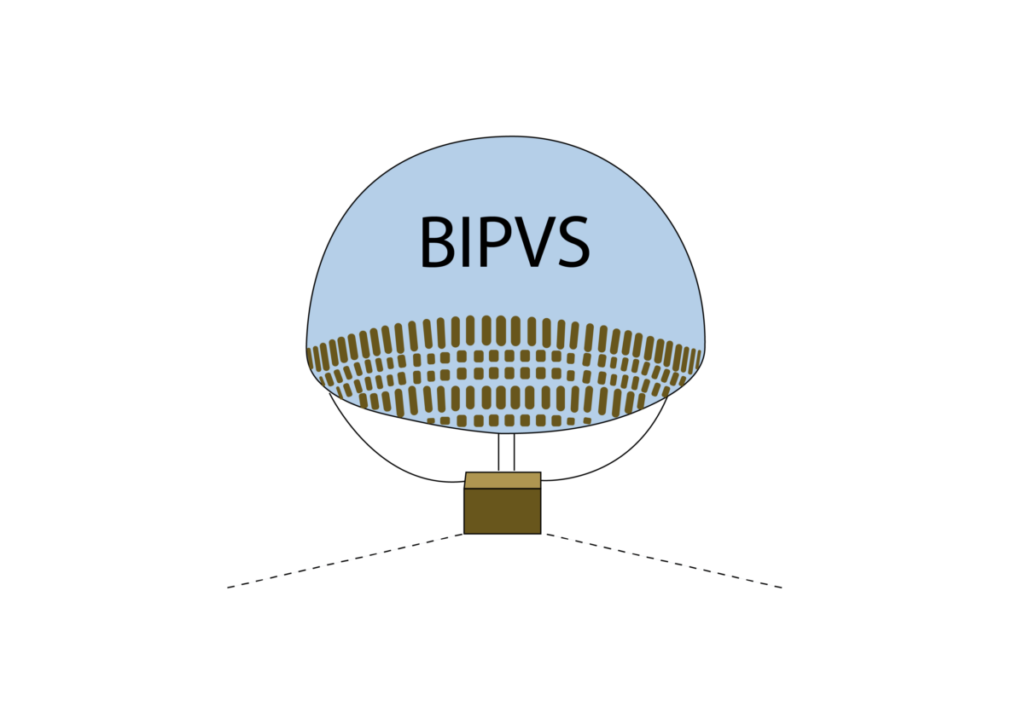Researchers in China have created a balloon-integrated photovoltaic system that reportedly represents a viable solution for emergency PV power generation in mid- to high-latitudes. It consists of a custom-made balloon, 19% efficient thin-film cadmium telluride solar cells, an exhaust valve, control and storage modules, fixed ropes and a cord reel, as well as an upper hemisphere and a lower arc surface.
A Chinese research group has developed a portable balloon-integrated photovoltaic system (BIPVS) for low-altitude applications.
“The origin of our research was a groundbreaking idea on the use of PV at low altitudes, proposed by Professor Jinyue Yan from Hong Kong Polytechnic Universitywho envisioned the integration of photovoltaic technology with kites,” said the corresponding author of the study, Tingsheng Zhangtold pv magazine. “However, after considering the environmental constraints, especially those imposed by wind conditions, we conducted a series of feasibility discussions, which led us to choose the direction of the photovoltaic balloon system concept.”
The proposed system is intended for Emergency power needs for disaster reconstruction at low altitudes, where the use of photovoltaics can significantly reduce the occurrence of shadows, Zhang said. It can be used during months of high solar radiation and stored away for the rest of the year, minimizing the risk of damage during unworkable months.
“Our solution consists of filling the balloon with a mixture of helium and air so that the system can be deployed at low altitude,” he added. “The design allows for easy assembly and disassembly by inflating and deflating the balloon, which is especially beneficial for regions with severe winters and frequent snow and ice at mid- to high latitudes. The portability of our system also makes it an ideal solution for remote areas.”
The BIPVS consists of a custom-made balloon, 19% efficient thin-film cadmium telluride (CdTe) solar cells, an exhaust valve, control and storage modules, fixed ropes and a cord reel, as well as an upper hemisphere and a lower arc surface. The upper hemisphere is based on transparent material that absorbs solar radiation in all directions and has light-concentrating effects due to refractive properties. The lower arc surface reduces the installation area of the thin film solar cell without affecting the effective light output.
The function of the solar cell position under the balloon is to protect the cells themselves against dust, snow and hail. The exhaust valve is used for active or passive gas discharge to power the balloon while reducing the high pressure inside caused by sun exposure. Control and storage modules are used to manage the power conversion and storage of the BIPVS, including charging and discharging storage devices, monitoring system parameters, and overload protection. The system also features four cables that stabilize the center of gravity and a fixed rope that connects it to the control and storage module and the cord reel on the ground.
Through a series of simulations, the group analyzed the system’s performance for five different locations: Vasteras in Sweden; Vancouver, Canada; New York in the United States; and Shanghai and Hong Kong in China. Shadow formation was not taken into account, because the scientists assumed that the system would be deployed at low altitude.
“After excluding unsuitable months, the case analysis shows that the average monthly power generation of the BIPVSs during the effective working months of a year is as follows: 3,921 GWh, 4,238 GWh, 4,275 GWh, 3,337 GWh and 3,379 GWh, respectively,” the group explained . “Additionally, the life cycle of the BIPVSs results in cumulative energy generation figures of 479,492 GWh, 592.18 GWh, 672,105 GWh, 641,155 GWh and 708,334 GWh, accompanied by total profits of USD 79,614 million, USD 37,007 million, USD 75,146 million, respectively USD 12.946 million and USD 107.369 million. The corresponding return on investment is 218.6%, 101.6%, 206.3%, 35.5%, 294.8%.”
The system was described in the article “A portable, balloon-integrated photovoltaic system deployed at low altitude”, which was recently published in Energy. “The proposed balloon-integrated photovoltaic system provides an efficient and feasible solution for PV energy generation at mid- to high-latitudes, offering significant energy, economic and environmental benefits,” the scientists concluded.
This content is copyrighted and may not be reused. If you would like to collaborate with us and reuse some of our content, please contact: editors@pv-magazine.com.

